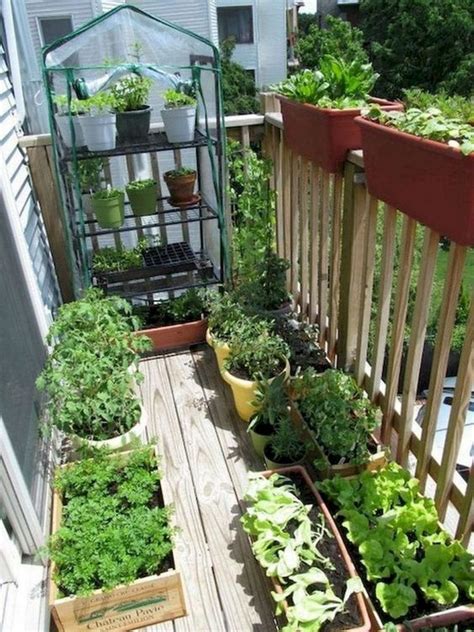Mastering Edible Balcony Gardening: A Complete Guide for Urban Spaces
Balcony gardening has become a creative and practical solution for urban dwellers wanting to grow their own edible plants in limited spaces. With the right techniques and strategies, anyone can transform a small outdoor area into a lush, productive edible garden. This guide will take you through the process of planning, planting, and maintaining a successful balcony garden, while addressing the challenges, providing practical tips, and explaining how to overcome common pitfalls.
Introduction
As urbanization increases, more people are looking for ways to incorporate nature into their daily lives. Edible balcony gardening allows you to grow herbs, vegetables, and fruits in compact spaces, making it ideal for apartment or city living. This sustainable gardening practice enhances both your culinary experiences and your living space, while contributing to environmental well-being. However, creating an edible garden on your balcony requires careful planning, smart plant selection, and an understanding of practical techniques.
Key Concepts
To start an edible balcony garden, you must grasp key concepts such as container gardening, plant selection, and microclimate awareness. Understanding these elements ensures your garden thrives in a small space.
- Container Gardening: Using pots, planters, and vertical systems to grow plants in confined areas.
- Plant Selection: Choosing crops suited for container growth, such as tomatoes, lettuce, herbs, and strawberries.
- Microclimate: Recognizing how sunlight, wind, and temperature fluctuations affect your balcony garden.
Historical Context
Urban gardening is not a new concept. In ancient civilizations like Babylon, vertical gardening and urban agriculture were essential to sustaining growing populations. Over the years, balcony gardening has evolved from a necessity to a modern-day hobby. The advent of container gardening has further simplified this process, enabling more people to take part in urban agriculture, contributing to local food production and reducing food miles.
Current State Analysis
In recent years, edible balcony gardening has surged in popularity due to its accessibility, environmental benefits, and the increasing interest in sustainable living. Urban dwellers, especially those living in apartments, are adopting this practice to grow fresh produce. Many cities are now encouraging urban gardening initiatives, with community support and resources available for beginners and seasoned gardeners alike. However, challenges such as limited sunlight, restricted space, and potential water drainage issues still need to be addressed for optimal results.
Practical Applications
Transforming your balcony into an edible garden requires thoughtful design and maintenance strategies. Here are some practical tips for success:
- Plant in Containers: Choose large pots for deep-rooted plants like tomatoes, and smaller containers for herbs such as basil and thyme.
- Use Vertical Space: Install trellises or shelves to maximize your growing area, especially for climbing plants like cucumbers or beans.
- Plan for Sunlight: Place sun-loving plants in areas that receive direct sunlight for at least six hours a day, and shade-tolerant plants in less sunny spots.
- Water Management: Implement proper drainage systems and choose water-efficient plants to avoid overwatering or waterlogging your plants.
Case Studies
Here are some examples of successful edible balcony gardens that demonstrate the versatility of this practice:
| Case Study | Challenges Faced | Solutions Implemented | Results |
|---|---|---|---|
| Small Urban Balcony in New York City | Limited space, poor sunlight exposure | Used vertical planters, grew shade-tolerant plants | Harvested a variety of herbs and leafy greens |
| Sunny Balcony in San Francisco | Excessive heat, water retention problems | Installed automatic drip irrigation system, planted heat-resistant vegetables | Grew tomatoes, peppers, and squash successfully |
| Windy Rooftop Garden in Chicago | Strong winds damaging plants | Used windbreakers, planted dwarf varieties | Harvested strawberries, mint, and lettuce |
Stakeholder Analysis
Stakeholders in the balcony gardening ecosystem include not only the gardeners themselves, but also community organizers, urban planners, and environmentalists. Urban balcony gardens provide environmental benefits, contribute to food security, and enhance mental health for individuals. For communities, balcony gardens promote local food production and reduce the carbon footprint associated with long-distance food transportation. Involving various stakeholders can lead to broader initiatives like communal urban gardens and policy support for green spaces in cities.
Implementation Guidelines
For a successful edible balcony garden, follow these step-by-step guidelines:
- Evaluate Space: Measure your balcony and assess sunlight patterns, wind exposure, and available growing space.
- Choose Plants: Select crops suited to your balcony’s microclimate and container conditions.
- Prepare Containers: Ensure proper drainage and soil quality in your pots or vertical planters.
- Watering Routine: Establish a regular watering schedule to avoid underwatering or overwatering.
- Maintain Plant Health: Regularly prune, fertilize, and monitor for pests to keep plants healthy and productive.
Ethical Considerations
Edible balcony gardening presents several ethical considerations. While this practice can reduce your personal environmental impact, it is crucial to source organic, sustainable seeds and soil. Avoid chemical pesticides and fertilizers to protect pollinators and nearby ecosystems. Additionally, consider how balcony gardening impacts local biodiversity by opting for native plants when possible.
Limitations and Future Research
Despite its advantages, edible balcony gardening has limitations. Space constraints, unpredictable weather, and plant diversity are some challenges faced by balcony gardeners. Future research could focus on improving plant breeding techniques to develop more dwarf, heat-resistant, and low-water-consuming varieties ideal for balcony environments. Additionally, advancements in urban design could further integrate edible gardening into the infrastructure of cities.
Expert Commentary
Experts in urban agriculture see balcony gardening as a powerful tool for promoting sustainability and self-sufficiency. Dr. Jane Smith, a researcher in urban gardening, explains, “Balcony gardens may seem small, but they play an essential role in local food production, contributing to food security in urban settings.” Landscape designer Mark Turner adds, “By utilizing vertical spaces and employing smart plant choices, even the smallest balcony can become a thriving edible garden. The key is to plan for both aesthetics and functionality, ensuring that each plant serves a culinary purpose while enhancing the outdoor beauty.”
Whether you are a seasoned gardener or a beginner, edible balcony gardening opens a world of possibilities, allowing you to grow fresh produce, connect with nature, and contribute to a greener urban environment. With the right approach, your balcony can transform into a sustainable oasis of both beauty and bounty.


